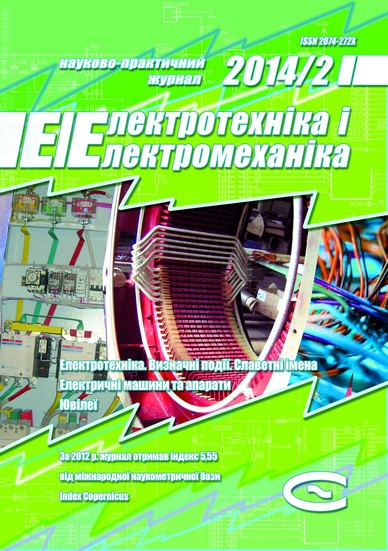Class structure of electromechanical energy converter models with UML-diagrams application
DOI:
https://doi.org/10.20998/2074-272X.2014.2.10Keywords:
object-oriented, design, electrical machine, class, object, mathematical model, inheritance, templateAbstract
Theoretical results are presented, mathematical model formation by means of inheritance from a generalized class template is shown for a general electromechanical energy converter.
References
Shynkarenko V.F. Osnovy teorii evoliutsii elektromekhanichnykh system. Kyiv, Naukova dumka Publ., 2002. 288 p.
Kopylov I.P. Matematicheskoe modelirovanie jelektricheskih mashin: High school book. Moscow, Vysshaja shkola Publ., 2001. 327 p.
Shynkarenko V.F., Zablodskiy N.N., Plyugin V.Ye. Substantiation of principles of object-oriented designing in electromechanical energy converters. Bulletin of NTU "KhPІ", 2011, no.48, pp. 76-83.
Zablodskiy N.N., Plyugin V.Ye. Ob'ektno-orientirovannoe proektirovanie jelektromehanicheskih preobrazovatelej jenergii s sovmeshhennymi funkcijami. Sb. nauk. prats DonDTU. Alchevsk: DonDTU, Lado Publ., 2011, no.34, pp. 321-327.
Plyugin V.Ye. A mathematical model of an electromechanical energy converter with a massive rotor. Electrical engineering & electromechanics, 2012, no.1, pp. 42-44.
Rambo Dzh., Blaha M.. UML 2.0. Ob'ektno-orientirovannoe modelirovanie i razrabotka. St.Petersburg, Piter Publ., 2007. 544 p.
Downloads
Published
How to Cite
Issue
Section
License
Copyright (c) 2015 V. Ye. Plyugin

This work is licensed under a Creative Commons Attribution-NonCommercial 4.0 International License.
Authors who publish with this journal agree to the following terms:
1. Authors retain copyright and grant the journal right of first publication with the work simultaneously licensed under a Creative Commons Attribution License that allows others to share the work with an acknowledgement of the work's authorship and initial publication in this journal.
2. Authors are able to enter into separate, additional contractual arrangements for the non-exclusive distribution of the journal's published version of the work (e.g., post it to an institutional repository or publish it in a book), with an acknowledgement of its initial publication in this journal.
3. Authors are permitted and encouraged to post their work online (e.g., in institutional repositories or on their website) prior to and during the submission process, as it can lead to productive exchanges, as well as earlier and greater citation of published work.





